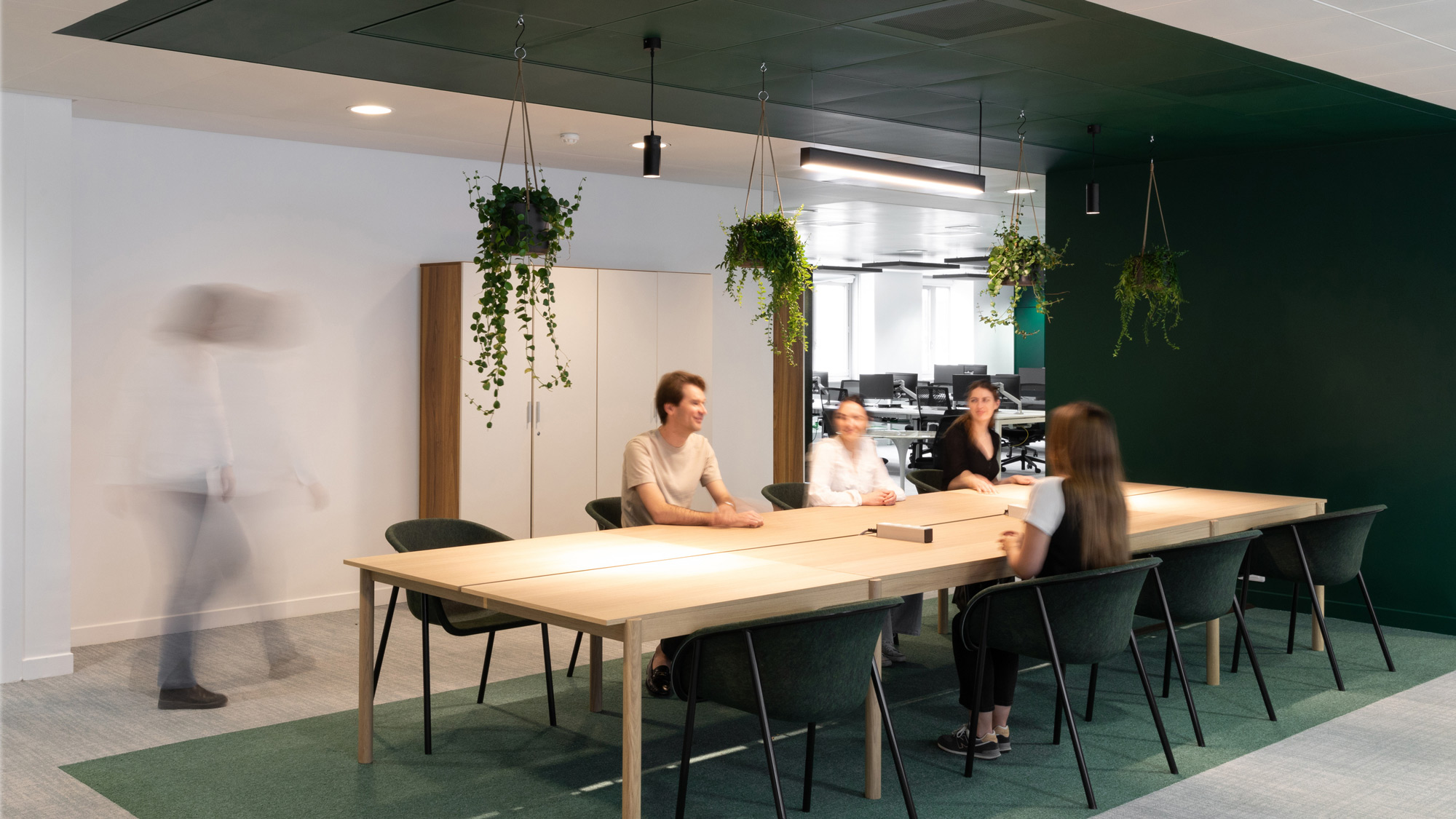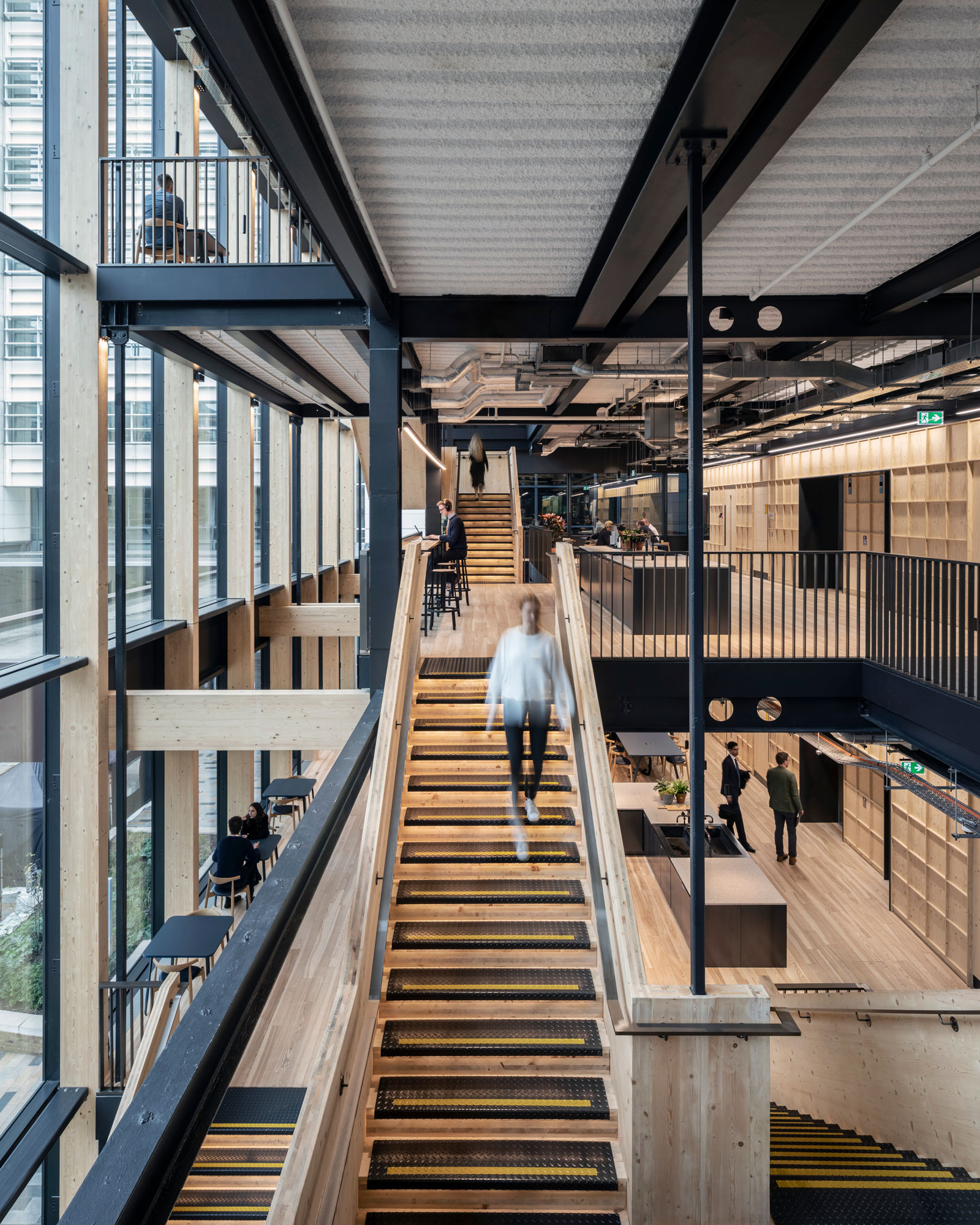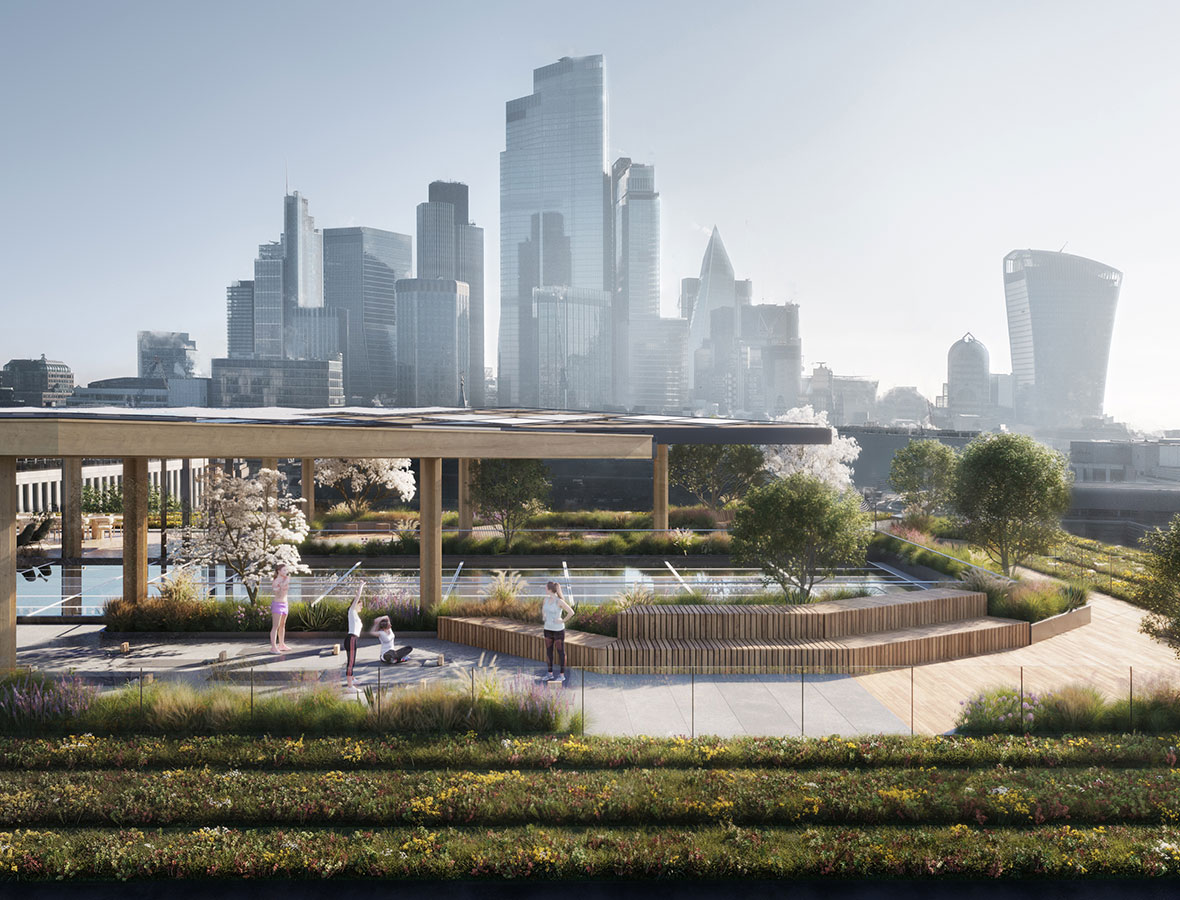What’s on the Horizon for Low-Carbon Design in the U.K.
May 07, 2024 | By Luke Askwith with Estelle Schurer
The way we consider carbon in the construction industry has completely transformed in the last five years. Whilst in the past, the focus was purely on the energy buildings use in a typical year of their life, we’re now taking into account whole-life carbon — a more holistic approach that also considers the carbon impact of a building’s materials, construction, maintenance, and demolition — and this has led to dramatic shifts in the way that buildings are designed and constructed.
I sat down with Estelle Schurer, a sustainability analyst from Gensler’s Climate Action & Sustainability practice area, to discuss the impacts of this transformation. In Estelle’s view, when designing sustainable architecture, “whole-life carbon is probably the most important factor because it’s the one proven, science-based issue that is directly causing global warming.” Given the urgency of the climate crisis, a shift in mentality to whole-life carbon over the last five years has become a necessity.
But what I found most striking about our conversation was Estelle’s thoughts around where the next five years will take us. She laid out how future standards, technologies, and shifts in mindset will transform to the way we think about carbon in our buildings, even more so than the shift we’ve seen over the last five years. “It’s going to be huge. It’s going to be game-changing.”
We’ll all be aligned behind unified targets.
“We’ve done a lot in five years — it’s quite impressive,” says Estelle. She describes how the conversation around whole life carbon has come so far in a relatively short time — but a side effect of this rapid change is the range of standards, targets, and definitions that often lay out opposing goals and definitions. This won’t be the case for much longer though — things will change with the introduction of the UK Net Zero Carbon Buildings Standard later this year. “It’s a really good way for us to speak the same language” with whole-life carbon design in the U.K., says Estelle — enabling us to compare new developments’ performance directly against one another far more easily than we can today.

New low-carbon materials and products will be transformative.
The materials that make up our buildings need to change if we’re going to dramatically reduce embodied carbon in our buildings. “We’ve begun decarbonising some building materials,” explains Estelle — but we’re still in the early days with this process. Over the next five years though, the landscape around low and net zero carbon building materials will change significantly, and the impact of this will be huge. “That’s the next big thing in the construction industry.”
What changes does Estelle see for the coming years? “Bio-based materials are the number one thing.” A greater use of bio-based materials has the potential to make the biggest carbon improvements — and this is an area we’ve been exploring at Gensler. Starting our journey in early 2016, when we designed our own London offices extensively using mass timber structure to minimise the embodied carbon impact, we’re now exploring what comes next for bio-based materials. Estelle lays out how future buildings could be constructed almost entirely from bio-based materials, with minimised metal or plastic in the base build or fit out: “When we think about 10 years from now, and the look and feel of offices and buildings, that will definitely change the way we feel, the way we interact, and it drives health and well-being in offices.”

Users will become far more aware of the true carbon impact of their buildings.
People want to work in buildings that are good for the environment — and Estelle describes how this will only increase as Gen Z becomes a larger proportion of the workforce: “Employees seek responsible employers, and employers and office tenants drive the demand and market for sustainable offices.” This makes it all the more important that our buildings not only perform well, but make this performance visible to users — a difficult task when we think of less visible aspects like the carbon impact of the materials themselves.
Estelle sees this as a key role for architects, who have a unique skillset to combine technical expertise with knowledge of users. We have the tools to “communicate reductions in carbon in a fun and attractive way in a physical space.” She described how ESG communication was key to our work on 10 Gresham Street, which had a number of innovative strategies that made a huge impact on the building’s carbon impact — but would not otherwise be clearly visible to users. Estelle helped the team to present this story in a way that tenants and end users could understand. “It was very successful — advertised in their marketing suite, and potential tenants could see it.”
The ESG communication on 10 Gresham Street was developed to tie together varied and complex sustainability approaches into a single, accessible message.
Estelle believes the U.K. has the potential to be a leader in whole life carbon: “We’re really pushing, compared to other countries.” But the revolution in low-carbon design over the next five years will require architectural teams that combine designers from engineering backgrounds like Estelle alongside architects and other consultants. “I think it’s healthy to combine both creativity and technicality in one company. It’s super important to upskill architects and designers… whole life carbon decisions happen very early [in the design process]. To drive those innovative ideas, you need to start from the very beginning.”

For media inquiries, email .


